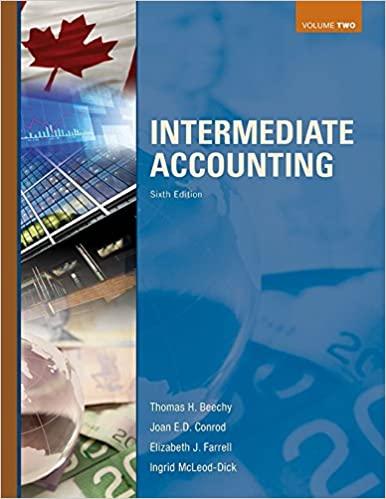Question
PhilcoLumber Company manufacturing wood pulp for the production of several paper products . Sales are expected to be 50,000 tons this year, and the following
PhilcoLumber Company manufacturing wood pulp for the production of several paper products . Sales are expected to be 50,000 tons this year, and the following figures were estimated for budgeting purposes:
Sales (50,000 tons) $3,500,000
Variable costs 2,100,000
Contribution Margin 1,400,000
Fixed Costs 900,000
Net Income $ 500,000
Philco company has just purchased Bobco Box Company, a smaller company that makes cardboard boxes. This new company will be treated as a division of Philco Lumber with full profit responsibilities.
Bobco is currently buying 5,000 tons of wood pulp from another supplier for $70 per ton. The CEO of Philco wants the new company to begin purchasing pulp from his factory, and has asked the managers both companies to arrange a transfer price.
Scenario #1: Bobco box has received a special order for very sturdy packing boxes. but cannot find an outside supplier who can deliver the special pulp required to make these boxes. However, the Philco factory can make this special pulp at a variable cost of $ 58 per ton. This pulp requires more Machine Hours (MH's) than regular pulp, so instead of producing 50,000 tons of regular pulp this year, they will only able to produce 44,000 tons. In addition, Philco would have to rent a special heavy duty cardboard stapling machine for $16,000.
a. Bobco box needs 4,000 tons of special pulp. If all Philco divisions requires 15% mark up on cost, what is the minimum price Philco Can charge for this special pulp?
Scenario #2:
Part A - The Philco factory is not producing as much pulp as expected due to slower than expected sales, and is expected to produce only 41,000 tons of pulp this year. Is a negotiated transfer price possible between Philco Lumber and Bobco Box? If so, what is the range of this price?
Part B - If a negotiated price of $60 pper ton is agreed to, how would the net income of both companies be affected?
Scenario #3:
Part A - The Philco factory can sel all 50,00 tons of its production to outside customers at the regular price $70 per ton. Can a negotiated price be reached? If so, what would be the negotiated prince range?
Part B - If the new company is forced to purchase from the Philco factory, what will happen to the operating incomes of each company?
Scenario #4: The Philco factory can sell all tons of its production to outside customer at the regular price of $70 per ton. However, if Philco can sells to Bobco Box Company ot can save $17 per ton on shipping and sales commissions, In this case, can a negotiated transfer price be reached? If so, what would the negotiated price range?
Scenario #5:
Part A - Assume Philco is currently producing 47,00 tons of pulp. What is the minimum price (both per unit and in total) that Philco should be willing to sell its pulp Bobco?
Part B - What would be the best strategic decision to Philco as a whole regarding selling pulp to Bobco. Be sure to state the effect on operating income compared to the current situation (Bobco is currently buying 5,000 tons from an outside supplier at $70 per ton).
Step by Step Solution
There are 3 Steps involved in it
Step: 1

Get Instant Access to Expert-Tailored Solutions
See step-by-step solutions with expert insights and AI powered tools for academic success
Step: 2

Step: 3

Ace Your Homework with AI
Get the answers you need in no time with our AI-driven, step-by-step assistance
Get Started


